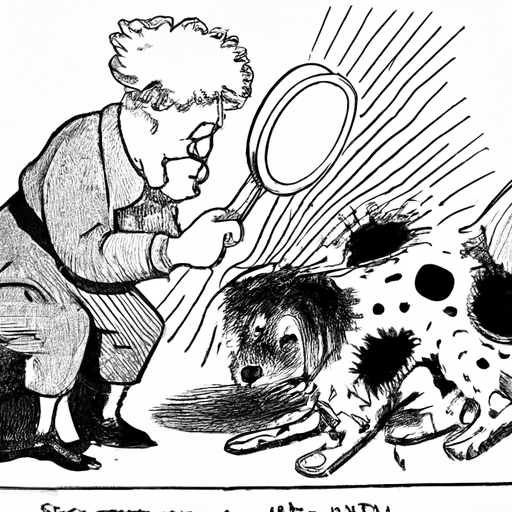As a caregiver, you always have the best interests of your furry friend at heart. Ensuring their health and well-being is your top priority. This guide will help you understand how dogs catch mange, a common skin disease in dogs.
What is Mange?
Mange is a skin disease caused by several species of tiny mites, some of which inhabit the skin and hair follicles. Others burrow into the skin. Mange can itch and appear as red bumps or blisters.
You might ask, “how does my dog get mange?” This is where the complexity starts. There are two types of mange that dogs typically catch:
- Demodectic Mange – This type of mange is caused by Demodex mites that live in the hair follicles of dogs. Puppies often get this from their mothers in the first few days of life.
- Sarcoptic Mange – Sarcoptic mange, also known as canine scabies, is caused by the Sarcoptes scabiei mite. Dogs get this type of mange from contact with an infected animal or object.
Transmission of Mange
The transmission of mange depends on the type of mite causing it.
Demodectic Mange is not contagious. These mites are a part of the dog’s natural fauna. Puppies acquire these mites from their mothers during nursing. Problems occur when the immune system can’t keep the mites in check, leading to an overpopulation.
Sarcoptic Mange, on the other hand, is highly contagious. Dogs can get it through direct contact with an infected animal. It can also be transmitted indirectly through objects like bedding or brushes.
Symptoms of Mange
The symptoms of mange can vary, but common signs include:
- Intense itching and scratching
- Redness and inflammation
- Hair loss (especially in patches)
- Sores and lesions
In severe cases, dogs might show signs of lethargy, loss of appetite, and fever.
Diagnosis and Treatment of Mange
If you notice any of the above symptoms in your dog, it’s best to consult your vet immediately. They will perform a physical examination and may take a skin scraping to identify the mite.
| Mange Type | Treatment |
|---|---|
| Demodectic | Topical lotions, shampoos, or dips |
| Sarcoptic | Prescribed medications and isolation |
It’s important to follow the vet’s instructions carefully. You may also need to clean or dispose of your dog’s bedding and toys to prevent re-infestation.
Prevention of Mange
Prevention is always better than cure. Here are a few tips to help prevent your dog from catching mange:
- Regular vet check-ups
- Good hygiene practices
- Avoiding dogs or areas known to be infested
- Regular use of preventive medications
FAQ
Q: Can humans catch mange from dogs?
A: Humans can catch a temporary form of mange from dogs. However, the mites can’t reproduce on human skin, so the disease doesn’t persist as it does in dogs.
Q: Can mange be fatal to dogs?
A: If left untreated, severe mange can lead to serious complications, including death. Early detection and treatment are crucial.
Q: How long does it take for mange to go away?
A: The length of treatment can vary depending on the severity of the disease. It can take anywhere from a few weeks to several months.
Q: Can I prevent my dog from getting mange?
A: While there’s no guaranteed way to prevent mange, regular vet check-ups, good hygiene practices, and the regular use of preventive medications can significantly reduce the risk.
Remember, as a caregiver, your dog depends on you for their health and well-being. By understanding how dogs catch mange, you can take steps to prevent it and ensure your furry friend stays happy and healthy.



